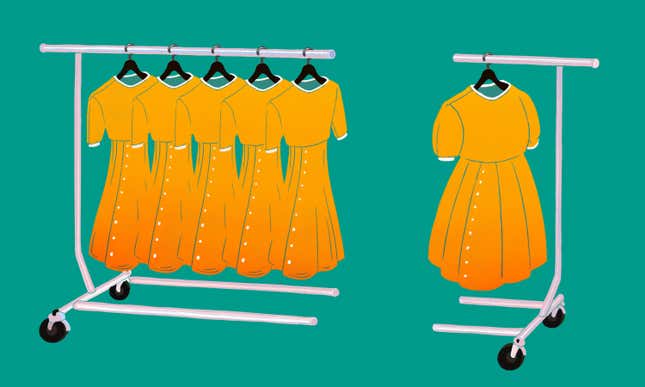How ModCloth Strayed From Its Feminist Beginnings and Ended Up a Walmart Property
Latest

The past couple years have been something of a season of ironic disappointment for customers of modern, ostensibly feminist clothing companies, from Nasty Gal’s infamously nasty corporate culture to new allegations of sexual harassment against the CEO of period underwear maker Thinx. Now, current and former employees at ModCloth are pointing to several issues at the company contributing to a sense of dissatisfaction among the staff: frequent layoffs, low pay, and an unpopular CEO. One alleged incident stands out: several insiders told Jezebel that CEO Matt Kaness made negative comments about the use of plus-size models, and wanted to see fewer of them on the site, telling employees in a meeting that they weren’t “aspirational” to look at. (Kaness denies having said that.)
ModCloth, a quirky online women’s retailer beloved by its customers for its mixture of twee and retro fashions, generated outrage from customers earlier this month when they announced they’d been acquired by Jet, which is owned by Walmart. Kaness defended the sale by saying that Walmart’s “culture” is similar to ModCloth’s own, a sentiment some of his employees don’t seem to share. Indeed, interviews with seven current and former ModCloth employees help illuminate how the company culture has shifted from the time it was co-founded by a now-married couple, Susan Gregg Koger and her husband Eric Koger, changes that echo the growing pains—for lack of a better term—seen at other tech-driven retailers catering to a customer base of young, with-it women.
Gregg Koger has talked often about how the company grew from a humble start in her dorm room to being a large and thriving company, but one core element of their hitting it big, starting around 2014, was an embrace of plus-size customers and models. That generated them a ton of positive publicity, as we noted at the time, as well as a very real bump in business:
Since last June, the company has doubled its plus business, expanding from 35 vendors to 160. They say they now carry 1,200 unique plus-size styles at any one time. It’s Modcloth’s fastest-growing category and, according to this infographic, plus-size shoppers place 20 percent more orders. (Hell, where else are we gonna shop? Forever 21+ only gets you so far.)
Longtime employees spoke warmly about the company’s early days.
“It was an absolute dream job,” one employee who quit about a year ago told us. “The thing that made it so special is that the company was genuine when it talked abut its values. Everyone that worked there shared those values personally. It was a place you felt good about the work you were doing.” Those values explicitly involved feminism, she adds: “Susan is a feminist. She’s open about that and the company aligned with those values. I think that’s why it grew so rapidly.”
In 2010, the company moved its headquarters from its Pittsburgh hometown to San Francisco, although the fulfillment centers, customer care center, and other key elements of the business are still located in Pittsburgh.
The San Francisco move was, the current and former employees told us, the start of a shift towards a more impersonal, stereotypically “Silicon Valley” company.
In size, ModCloth has shrunk recently: at least six rounds of layoffs in the past year dwindled the employee numbers down to about 300 people from 370. In the past two years, monetarily, the company has grown: it’s not publicly traded, so we don’t know specifics, but they took on millions in venture capital funding, mostly recently $15 million of Series C funding in June 2015. (According to Recode, the company “struggled to operate profitably” in recent years and weren’t able to secure another round of funding.)
At the same time that the company grew financially, the hiring also changed, the current and former employees say. “They were hiring from companies with more cutthroat cultures,” one former employee told us. “They brought that culture in the workplace.” It was also the start of a brief period of tech-startup-like spending, she adds: “They also spent a shit-ton of money in that time. It wasn’t smart. We had a nap room. One of the executives insisted we buy an anti-gravity chair for that room.”
-

-

-

-

-

-

-

-

-

-

-

-

-

-

-

-

-

-

-

-

-

-

-

-

-

-

-

-

-

-

-

-

-

-

-

-

-

-

-

-








































